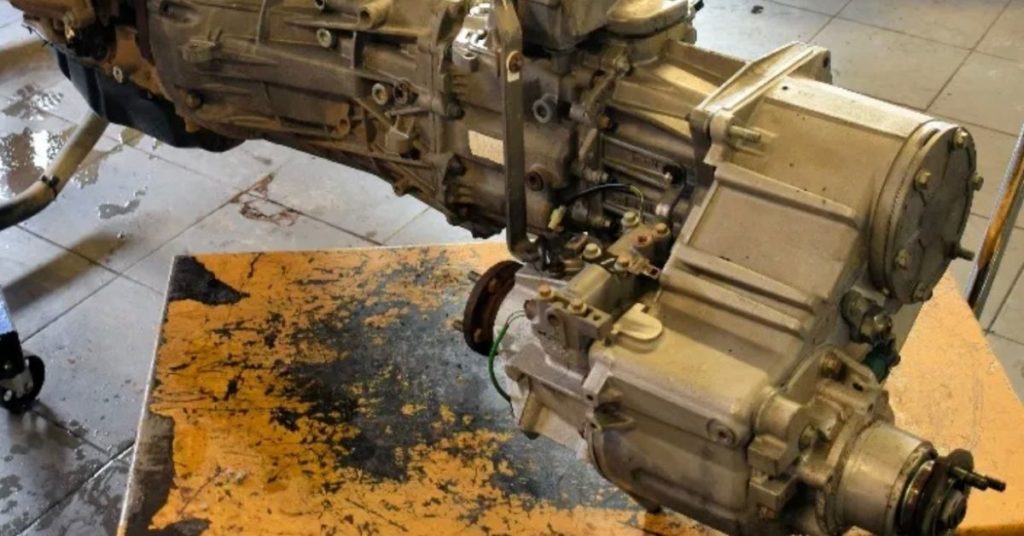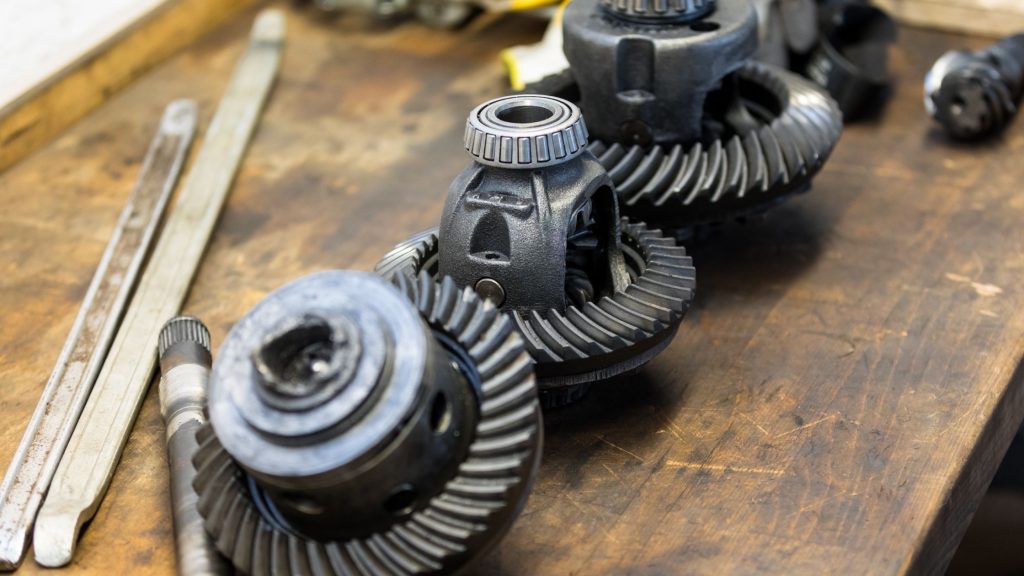Trucks and offroad vehicles are some of the most intricate machines on the road. It seems that every truck is different from the other, and there are always dozens of choices to make when buying a new one or altering one of your own.
One of the most neglected components on a truck is the transfer case. In this article, we’ll explore divorced transfer cases- what they are, their pros and cons, and alternatives. Let’s take a look, shall we?
What is a transfer case?
You may be wondering just what a transfer case is. Well, a transfer case is a component of the drivetrain found on four-wheel, or all-wheel drive vehicles.
Its function is to transfer power from the transmission to the axles located at the front and rear of the car.
It does this via the use of drive shafts. Its secondary function is to synchronize the front and rear wheels, so they spin at the same rate.
A transfer case designed for off-road use will be able to lock the front and rear driveshafts when the driver needs. This helps to give the vehicle better traction and is very similar to differential lock.
Offroad vehicles may also use a transfer case which contains a set of low range gears, which can be activated with a push of a button. This allows the vehicle to drive at very slow speeds, whilst keeping torque levels to a maximum, which is perfect for tough terrain.
What is a divorced transfer case?
The term ‘divorced’ relates to the housing type of the transfer case. Divorced transfer cases are completely separate from the transmission and is located further down the vehicle’s driveline. A divorced transfer case is connected to the transmission output shaft via a driveshaft.
You’ll find divorced transfer cases on vehicles with longer wheelbases. These include trucks, military utility vehicles and four-by-four off-roaders. This is because divorced transfer cases allow for better offroad capabilities than other setups.
The other kind of transfer case is known as a married transfer case.
Advantages of a divorced transfer case
- Offroad advantages- Perhaps the biggest advantage of a divorced transfer case is the fact that it can save you from using harsh driveline angles at the front of your car.
This essentially means that you’ll be able to drive your car over extremely harsh terrain, without having to worry about anything breaking or going wrong. This makes a divorced transfer case a great choice for anyone who pushes their vehicle to the limit offroad.
- Benefits the driveshafts- On larger or longer vehicles, the driveshafts are generally a little too long to be practical. A divorced transfer case can help to break these driveshafts up, making longer vehicles more durable and practical.
Disadvantages of a divorced transfer case
- More Components- A divorced transfer case generally uses many more components than a married transfer case. This means that a divorced case has a much higher chance of breaking or malfunctioning than a married transfer case.
This can make divorced cases less reliable, and overall less valuable, especially if you’re looking to go offroad frequently. The first component to break is usually the mount, which undergoes a lot of torque pressure.
- Price- Divorced transfer cases are, on average, more expensive than married transfer cases. So, if a manufacturer uses a divorced case, you’re going to have to pay significantly more than the equivalent model which uses a married transfer case.
Ultimately, this means that divorced cases are harder to find on standard cars and are used sparingly by car companies.
- Poor ground clearance- A divorced transfer case sits lower than a married one. This means that vehicles using divorced cases will have to sacrifice ground clearance, which can be a pretty big compromise, especially for offroad vehicles.
What are the alternatives?

If you don’t like the sound of a divorced transfer case, there is an alternative. It’s called a married transfer case and is very different from a divorced version.
The biggest difference is that married cases are attached directly to the transmission, between the output shaft and main driveshaft. Married transfer cases are used on many all-wheel drive cars, but are generally found on smaller cars rather than bigger trucks or lorries.
Advantages of a married transfer case
- Great ground clearance- because a married transfer case sits within the transmission assembly, it doesn’t take up any extra room. This means that ground clearance will be much better in a vehicle with a married transfer case. This is particularly good for offroad vehicles.
- More frequently used- Married transfer cases are the most common type of case on most modern vehicles. This will make your life much easier when trying to repair, alter, or upgrade your vehicle, as most mechanics will be familiar with the design, and have the correct parts and equipment for your needs.
Divorced cases, on the other hand, are much more difficult to fix or replace, as they simply aren’t used much anymore.
Disadvantages of a married transfer case
- Problems with the constant-velocity joint- Married transfer cases can cause several issues with the CV joint. The biggest problem is that the case interferes with the fluid transfer, leaving one joint overflowing with fluid and the other bone-dry. This can cause some serious long-term damage and is probably the biggest hassle with married cases.
- Poor Design- Many vehicles that use a married transfer case use a very poor design. Most of the time, the materials used are far too weak, which can lead to some bad damage over a long period of time. The biggest things to look out for are the couplings and adaptors, which frequently break on all kinds of vehicles.
Should I use a divorced or married transfer case?
The transfer case that you should use all depends on your personal preferences, and what you’re going to use your vehicle for.
If you have a longer truck, or lorry which you intend to use offroad, then a divorced transfer case might be better for you. This is because a divorced case will break up the driveshafts, making your truck more durable. You’ll also benefit from great driving angles offroad.
If you have a smaller truck or vehicle, a married transfer case will probably be your best choice. It’s going to be more practical and reliable for everyday use, and you’ll also benefit from the added ground clearance, which will increase your offroad capabilities.
Transfer cases are an essential part of any offroad vehicle or truck and choosing the right type will elevate your vehicle’s performance dramatically. Always consult with a mechanic before making any changes to your car, and happy off-roading!
- Tips and tricks For Setting Up Camp Like a Pro - September 11, 2023
- The Best Multi-Tools for Overlanding Adventures - August 25, 2023
- Off-Road Navigation Tips for Overlanders - August 13, 2023


